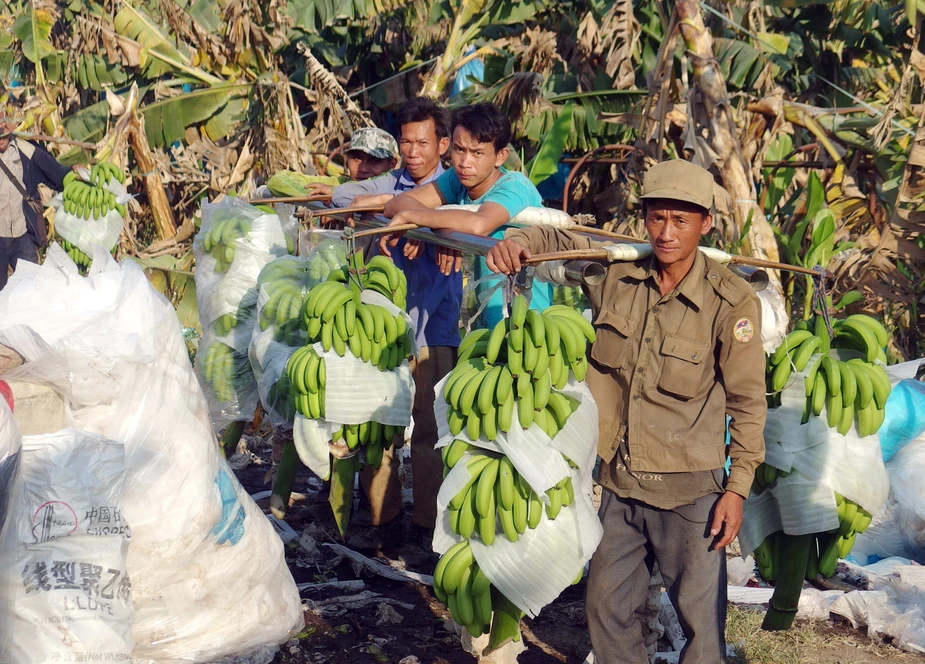Tracing the Anthropocene
Professor of geography Jonas Østergaard Nielsen studies land use changes in an age of global interconnectedness
“There is nothing left on this earth that is unaffected by human influence,” says Jonas Østergaard Nielsen. Pollution, the extinction of species, climate change – the human species is reshaping the planet and increasingly interfering in natural processes. This current earth age is called the Anthropocene. Using the telecoupling approach, the geographer and his team are studying how local policies and economic decisions affect land use in other countries. Their goal: to uncover causal chains and mechanisms of global interconnectedness – thus contributing to not only setting sustainability goals, but actually achieving them.
Changes in policy and economics mainly affect the region they occurred in. This is the type of nation-based thinking that still underlies many research approaches. The reality looks very different in an age of globalisation, when production and consumption of goods are increasingly decoupled. “Local changes, for example, in land use are the result of complex interactions that transcend institutional, spatial, and temporal boundaries,” says Nielsen. And that is a problem, because “it makes it incredibly challenging to relate the causes and effects and thus also to develop policy measures that have a regulative effect.”
Telecoupling – a relatively new research approach, combining scientific methods from different disciplines – could shed light on the matter. Nielsen and his team are currently working on developing this approach further. As part of the research project “Coupled”, funded by the European Commission, researchers across fourteen PhD projects are examining what produces changes in land use in different world regions and how these changes affect other regions. For example, the Luang Namtha Province in Laos, South-East Asia. In this border region between Myanmar and China, rice was the main crop for a long time. For some years now, rice fields are giving way to banana plantations. “More and more land is taken over by Chinese investors, who export fruit to China,” says Nielsen. How does this happen?
“The situation was preceded by the Chinese government calling on its citizens to eat bananas every day for its health benefits.” According to the professor, this resulted in a high demand in China, which was initially met with imports from the Philippines. “In 2012, China restricted imports from the Philippines, citing the emergence of a fungus, the so-called Panama disease.” However, the embargo’s real cause was probably not the fungus but the geopolitical conflict between China and the Philippines, who clashed over territorial rights in the South China Sea. Suddenly, bananas were in short supply in China. Enter Laos: The plant disease hadn’t reached Laos and so the banana trade was a more lucrative business than the rice-based subsistence economy, resulting in an increased conversion of rice fields into banana plantations. This, however, was not without consequences.
“These new monocultures not only pollute the soil but also endanger the local supply with rice, a staple,” says the geographer. The Laotian government tried to intervene but failed due to the complex, informal land acquisition measures of Chinese investors. “Laos shows that today’s governments have hard time when local changes are the result of complex telecoupling: The conditions are initially opaque, because the socioeconomic and political drivers of a certain development are far away, spatially, from those bearing the consequences.”
Similar constellations can be witnessed all over the world today. From the organic certified pineapple, which is popular in Germany and transported on pallets made of illegal tropical wood, to sustainable crops in Indonesia, which, in turn, lead to an increase in monocultural palm oil production on Borneo island. “Another recent example: Increasing prosperity among the Chinese population has created more demand for pork in China, resulting in an increase in production in Europe. This results in more rainforests being cleared in Argentina, because the land is used to cultivate soy to feed the pigs.” It is apparent everywhere: In the 21st century, local changes tend to have complex, global causes – whenever a region improves its conditions and minimises pollution, outdated practices often shift elsewhere.
“Making sure that no orangutans die for producing garden furniture or clothing is manufactured without using child labour is a real challenge,” says the geographer. However, he does not view this as a reason to give up hope but shows activist spirit instead: The scientist calls for more awareness and involvement – also by researchers. “The telecoupling approach can help us to identify the players and to understand how the dynamic plays out. Our aim should be to start a dialogue with the drivers of such developments and initiate changes together.”
By Nora Lessing for Adlershof Journal

